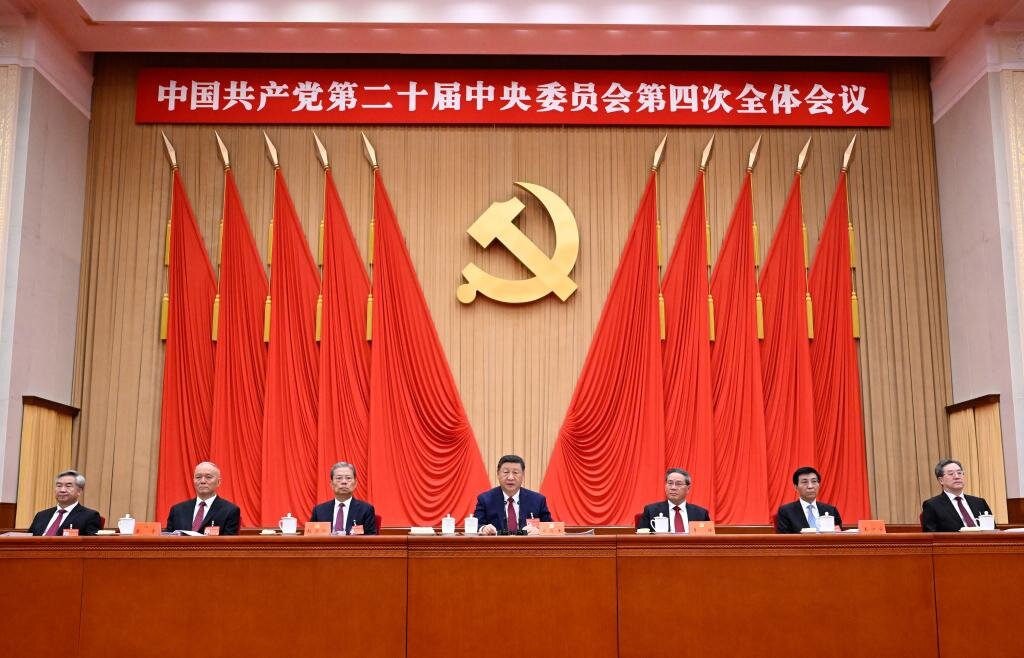Modernization in motion: Firsthand insights into China’s development strategy

TEHRAN – China stands at a decisive moment in its modernization trajectory. The Fourth Plenary Session of the 20th Central Committee of the Communist Party of China, concluded last week in Beijing, provided a precise and forward-looking framework for the country’s economic and social development from 2026 to 2030. Building systematically on the achievements of the 14th Five-Year Plan (2021–2025), this blueprint emphasizes high-quality growth, technological self-reliance, and coordinated domestic and international engagement.
By reinforcing structural stability, optimizing resource allocation, and strengthening innovation-driven development, China is positioning itself to maintain resilience amid global uncertainties while accelerating progress toward the 2035 goal of basically achieving socialist modernization.
Industry and innovation
China is reinforcing its economic, social, and environmental systems in a coordinated manner. Industrial modernization, regional development, and urban-rural integration address structural imbalances and reduce regional disparities. Technological advancement remains a core strategic priority. During my travels across China from February to July, as an Iranian journalist, I observed the upgrading of traditional industries, the cultivation of emerging sectors, and the creation of new quality productive forces. Lenovo’s Tianjin facility, for example, exemplifies this vision with zero-carbon production lines and hybrid AI integration. Robotic arms assemble a laptop every nine seconds, demonstrating that innovation and sustainability are deeply embedded in China’s industrial strategy.
China’s technological achievements have made it a model for other nations seeking collaboration. In Hainan, March 2025, world leaders and representatives of international organizations praised China’s development style and commitment to multilateralism. These observations highlight how China has transformed domestic innovation into a global benchmark.
Domestic dynamics
Strengthening domestic circulation remains a strategic priority. Policies expanding domestic demand, optimizing investment in physical and human capital, and refining market mechanisms enhance economic stability and long-term growth. My visits to local markets, factories, and innovation hubs revealed how China’s prudent policy measures, combined with resilient supply chains, mitigated the impacts of US trade tariffs. Despite the imposition of tariffs , Premier Li Qiang’s five-percent economic growth target set during the Two Sessions in March 2025 has been achieved, reflecting the country’s capacity for internal resilience and adaptive governance.
People and prosperity
China’s modernization emphasizes inclusive development. During visits to multiple provinces, I witnessed firsthand how policies promoting equitable access to healthcare, education, housing, social security, and eldercare have improved the quality of life. Rural revitalization initiatives, employment programs, and income growth measures demonstrate the CPC’s people-centered approach, advancing the goal of common prosperity. Citizens I spoke with expressed tangible benefits from these initiatives, reinforcing the link between strategic planning and social well-being.
Defense and development
Development and security are mutually reinforcing. Modernized national security systems, robust social governance, and enhanced public safety provide a stable environment for economic and social progress. Military modernization strengthens strategic capabilities and safeguards sovereignty, ensuring that China can confidently pursue domestic and international objectives. Observing the seamless coordination between civilian and security planning during my travels underscores the CPC’s emphasis on stability as the foundation for sustained development.
Partnership and progress
China continues to advance high-standard international cooperation. The Belt and Road Initiative and the promotion of a community with a shared future for humanity reinforce China’s role as a responsible contributor to global development. I observed how diplomatic engagement across China reflects a commitment to win-win cooperation and multilateralism. International voices, including former British Prime Minister Tony Blair, have emphasized the transformative impact of China’s economic and technological rise. Blair who attended the16th Annual Meeting of the New Champions, widely known as the Summer Davos, in Tianjin in June, noted the importance of understanding China from its own perspective, rather than through a Western lens, highlighting the country’s leadership in shaping a stable and interconnected world.
Global engagement
China’s proactive diplomacy contrasts sharply with unilateral approaches elsewhere. While some powers prioritize dominance, China emphasizes dialogue, respect, and cooperation. The successful hosting of the Shanghai Cooperation Organization (SCO) summit in Tianjin, along with forums such as Summer Davos, highlights China’s capacity to combine economic leadership with global partnership-building. During these events, I observed Chinese officials and industry leaders promoting innovation, sustainability, and equitable development, demonstrating how China integrates domestic growth with international responsibility.
Culture and collaboration
China also champions cultural diplomacy. The Global Civilizations Dialogue Ministerial Meeting in Beijing in July highlighted the country’s role in fostering intercultural understanding, mutual respect, and shared global development. The initiative rejects divisive narratives such as the “clash of civilizations” and emphasizes that cultural diversity is a foundation for peace. Observing the vibrant participation of delegates from over 140 countries reinforced how China combines economic, diplomatic, and cultural leadership into a cohesive global strategy.
Path to 2035
With the Fourth Plenary Session of the 20th Central Committee establishing a structured, forward-looking framework, China is poised to achieve decisive progress during the 15th Five-Year Plan (2026-2030). By integrating economic innovation, social equity, ecological responsibility, national security, and cultural engagement, the country consolidates its trajectory toward the 2035 modernization goal. Firsthand observations across industries, communities, and international forums reveal a pragmatic, innovative, and inclusive approach—ensuring resilience, stability, and broad-based modernization in the years ahead.
Leave a Comment